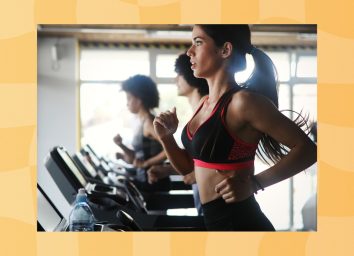6 Unhealthy Workout Myths You Need To Stop Believing, Expert Says
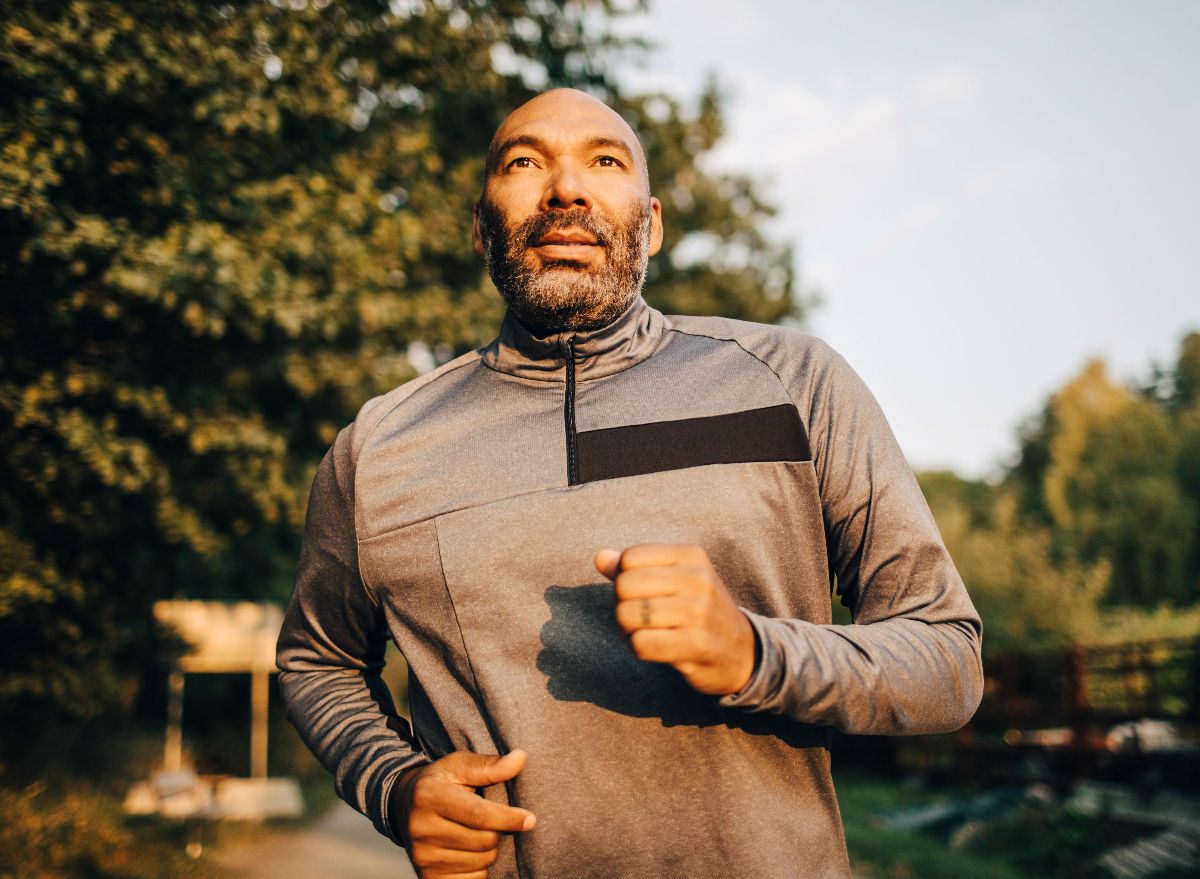
It's so easy to get caught up listening to what may or may not work for other individuals at the gym. But we spoke to an expert and are here today with some facts that you can listen to and learn from, along with the worst workout myths you need to stop believing right now.
We chatted with Dr. Mike Bohl, the Director of Medical Content & Education at Ro and a certified personal trainer, who reviews some of the most common myths when it comes to working out, and are here to set things straight. Dr. Bohl points out, "There are many different ways to work out, depending on your goals. Common goals include building muscle, losing weight, maintaining a baseline level of functionality, perfecting a specific type of athletic performance, and more. The best workout for you may not be the best workout for somebody else if you each have different goals."
Whether you're here to learn about burning fat or building a six-pack, we're going to share some interesting facts and bust some myths. Before we begin, let's stress that the most important component of working out is to identify what works best for you, and you should never hesitate to discuss any concerns or confusion with a personal trainer. In the meantime, read on to learn some interesting facts and unhealthy workout myths.
Myth 1: You can spot train and lose weight in specific areas of the body.

Many individuals are believers in spot training, which is the ability to focus your weight loss on one or more specific parts of your body, and this is one of the super common workout myths. Dr. Bohl provides an example, saying, "[Some people think that] doing an arm workout will decrease arm fat, or doing crunches will decrease belly fat. But the way the body burns fat and turns it into energy doesn't work this way." He adds, "When you work out and burn calories, you lose fat from everywhere—not just from the fat that's closest to the muscles you used."
Related: Fitness Mistakes at 50 That Prevent You From Losing Weight, Says Trainer
Myth 2: The "fat-burning zone" is the best range in which to lose weight.
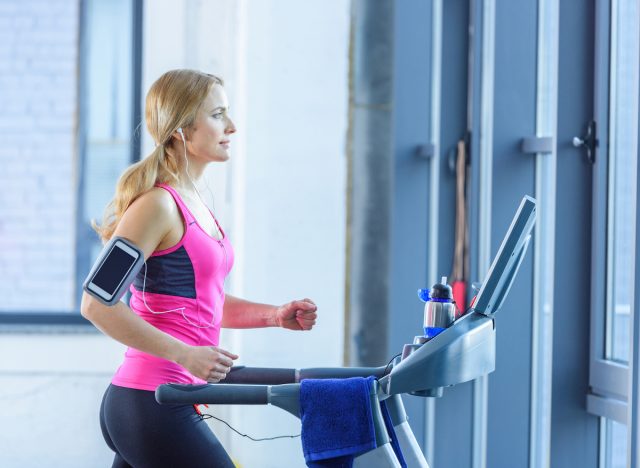
Many cardio machines have a setting dubbed the "fat-burning zone," which typically correlates to your heart rate range. Many individuals think that staying within this "fat-burning zone" is the most productive way to drop excess weight (and that losing weight is not as efficient when going higher than this zone). Dr. Bohl sets things straight, revealing, "It is true that lower-intensity workouts burn a higher relative percentage of fat than higher-intensity workouts (higher-intensity workouts burn a higher percentage of carbohydrates). But when it comes to the total number of calories burned over a period of time, you still burn more fat calories when working out at higher intensities." Lesson learned!
Myth 3: You'll get a six-pack by doing sit-ups or crunches.
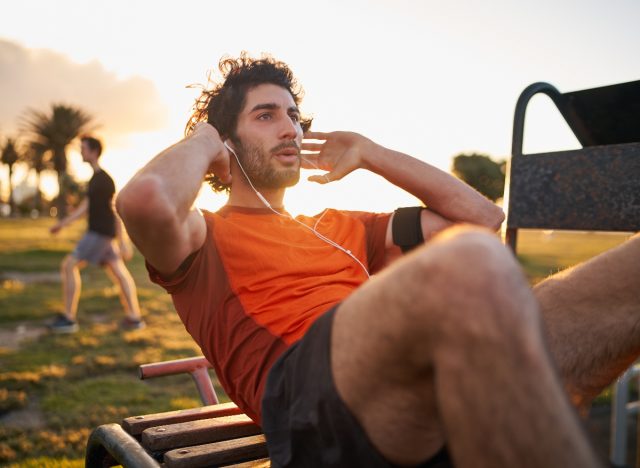
Okay, sit-ups and crunches can definitely help sculpt and tone your ab muscles, but a six-pack? Well, Dr. Bohl says that has more to do with the percentage of body fat you have. He explains, "While a good ab workout doesn't hurt, it's dieting and losing the layer of fat that sits over the abdominal muscles that are the best ways to get visible abs."
Related: The Worst Wellness Myths To Stop Believing Right Now, Says Expert
Myth 4: Working out is the best way to drop weight
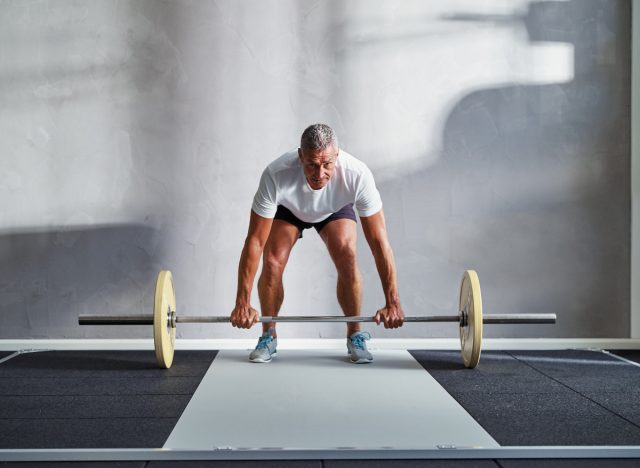
It's no secret that sticking with a regular workout is an excellent way to stay fit, avoid disease, enhance cardiovascular health, and torch more calories. But Dr. Bohl points out, "When it comes to weight loss, the biggest impact actually has to do with your diet rather than how much you exercise." He adds, "Exercising does contribute to weight loss (and having more muscle mass also burns more calories), but being mindful of how many calories you're consuming matters more."
Myth 5: BMI is the top indicator of body composition.
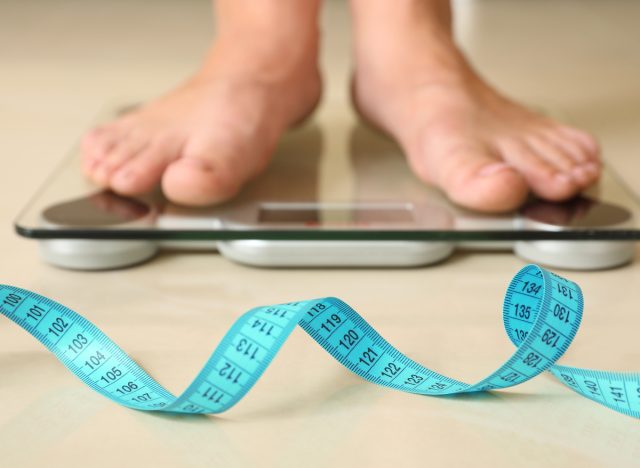
It's important to know that there are many different ways to estimate your body composition. For instance, Dr. Bohl says you can try a body fat scale, which runs "an electric current through your body"; skinfold calipers, which pinch the skin in different parts of your body; hydrostatic weighing, which is a method of being weighed while you're underwater; and take circumference measurements of various parts of your body.
Dr. Bohl informs us, "Measuring body mass index (BMI) is one of the most popular. The benefit of using BMI to estimate body composition is that it's easy—BMI is calculated as a person's weight in kilograms divided by their height in meters squared." He adds, "BMI is also used in the medical field to determine whether somebody is underweight, healthy weight, overweight, or has obesity. But while BMI is perhaps the easiest way to estimate body composition, it isn't necessarily the most accurate. For example, BMI can't distinguish between weight that comes from muscle or weight that comes from fat. So somebody who is very muscular may have a high BMI even though they actually have a low body fat percentage."
Myth 6: It's important to perform static stretching before working out.
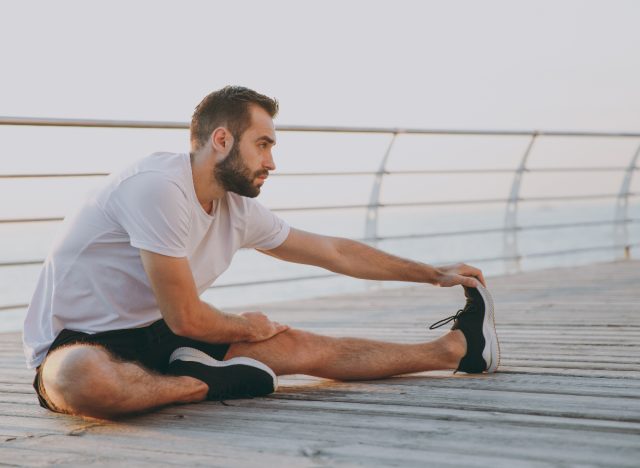
The last of the workout myths has to do with static stretching. It's a fact that stretching is an important part of fitness. Stretching it out can better your range of motion, posture, and overall performance. But Dr. Bohl explains that there are different kinds of stretching. He says, "Static stretching—the type of stretching you do when you move into a position and hold it for at least 30 seconds—isn't actually the type of stretching that people should do before working out. Instead, before working out, people should do dynamic stretching. Dynamic stretches are active movements that put muscles through their ranges of motion and get them ready for a workout. It's after a workout, during the cool-down period, that static stretching can be beneficial for the body and reset the muscles."

